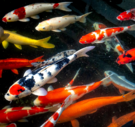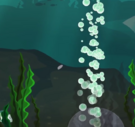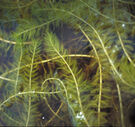
Freshwater resources account for less than 1% of the total water that resides on earth. And now, due to climate change, fresh water resources are depleting. With glaciers melting, reservoirs drying up and aquifers depleting more by the day, you’d think there would be more urgency to protect what fresh water we have left. Yet this precious resource continues to be contaminated from industrial, agricultural, and domestic activity. Contamination of heavy metals in fresh water are becoming a problem for the environment, fish, animals, crops and people. You are what you eat (and drink) has never been closer to the truth.
 Heavy metals are classified as elements with high atomic mass such as copper, cadmium, iron, lead, mercury, and arsenic. Most of these elements are naturally occurring, and not harmful when exposed to in small amounts. However, due to the growth of industrial, agricultural and domestic activities, heavy metals are being extracted from the earth, used in high quantities, and discharged as waste back into our environment. Sources of heavy metal pollution are mainly discharged from domestic waste, agricultural runoff, industrial mining and smelting, burning fossil fuels, and the use of pesticides [1]. The pollution is most often discharged into sewage treatment plants, or directly into waterways, where it is deprived of proper treatment. Heavy metals discharged into ground water and surface water can cause a number of problems across the entire food chain.
Heavy metals are classified as elements with high atomic mass such as copper, cadmium, iron, lead, mercury, and arsenic. Most of these elements are naturally occurring, and not harmful when exposed to in small amounts. However, due to the growth of industrial, agricultural and domestic activities, heavy metals are being extracted from the earth, used in high quantities, and discharged as waste back into our environment. Sources of heavy metal pollution are mainly discharged from domestic waste, agricultural runoff, industrial mining and smelting, burning fossil fuels, and the use of pesticides [1]. The pollution is most often discharged into sewage treatment plants, or directly into waterways, where it is deprived of proper treatment. Heavy metals discharged into ground water and surface water can cause a number of problems across the entire food chain.
Fertilizers and pesticides used to control plant growth, weeds, and pests, often contain heavy metals. Nitrogen and phosphates are common in fertilizers, and copper sulphate is the most common weed killing ingredient. When these chemical solutions are sprayed on crops and dumped in ponds it can wreak havoc on the ecosystem.
phosphates are common in fertilizers, and copper sulphate is the most common weed killing ingredient. When these chemical solutions are sprayed on crops and dumped in ponds it can wreak havoc on the ecosystem.
A very important biological property of most metals, is their tendency to accumulate. Heavy metals accumulate through the root of the plant or its stomata, and bind with proteins in plant and animal cells and can cause cell damage and leakage.
Intake of vegetables is an important path of heavy metal toxicity to humans.
Crops and vegetables grown in soils contaminated with heavy metals from the ground water, irrigation, fertilizers, and pesticides have greater accumulation of heavy metals. Some plants have greater potential to accumulate higher concentration of metals than others.
Animals who eat contaminated vegetables are also at risk. But there are other ways they can be exposed to heavy metals throughout the food chain as well.
You may be familiar with how mercury can be present in ocean fish, and how this has caused them to become dangerous to eat. This happens through a process called bioaccumulation. Animal’s bodies are made to eliminate toxins. But, sometimes the rate of uptake, when a contaminant passes through an animal’s system, exceeds its rate of elimination and the contaminants can accumulate in its blood and tissues.
This can not only cause harm to the fish but for other animals in the food chain, including birds, bears, and humans who eat fish are all at risk for contamination. When we eat fish that have bioaccumulated contaminants, we are not ingesting them in small doses over time like the fish did. Contaminants are stored in the fish at higher concentrations, and our bodies may not be equipped to process them.
Animals can also come into contact with heavy metals directly from the water they drink. On farms, dugouts are a primary source of water for crops and livestock, and can often become contaminated by heavy metals.
Copper Sulphate, is used as an algaecide, herbicide, fungicide, and root killer in both agriculture and non-agricultural settings [1]. It is the most common solutions to algae and weed control in dugout ponds. The copper ion component of copper sulphate can be toxic, the ion binds to groups of protein molecules, producing cell damage and leakage, to kill the plant. This not only affects plant cells but animal cells too.
Symptoms in cattle and sheep who suffer from over exposure to copper sulphate have been reported as diminished appetite, diarrhea, salivation, inflammation, corrosion, lesions in the stomach and intestines, and abdominal pain. These symptoms can lead to dehydration, shock and in some cases, death [2].
Another reason to ensure livestock have clean water to drink from is to maximize healthy weight gain. A study on cattle show that young cattle drinking clean water gained 23% more weight than cattle drinking contaminated water [3].
Bioaccumulation of heavy metals has been found in humans as well, from eating contaminated meat, vegetables, and drinking contaminated water. One study that analysed accumulation of heavy metals in human teeth found that contaminants were stronger in the teeth of older participants in the study, and that contaminants were also stronger in participants from China as opposed to other countries, due to higher levels of pollution. The same results have shown in fish, where bioaccumulation of metals is higher, the closer the fishes proximity to a smelter.
If high levels of heavy metals enter the bloodstream they can damage the nervous system, and the liver and kidneys that filter them out. Scientists are still exploring the effects of heavy metal pollution on the environment, and on humans. A recent study on patients with kidney cancer found high levels of heavy metals in the patient’s tumors. In addition to cancer, heavy metal contamination has been linked to nerve damage, kidney failure, and in some cases death.
Heavy metal pollution can affect the environment through multiple levels of the food chain. From the source to soil and water, accumulating in plants, animals, and eventually humans. It’s a problem that needs to be tackled. But can one person’s efforts really make a difference in such a wide spread problem? The answer is yes. You can help minimize the effects of heavy metal pollution by starting in your own back yard.
Use as many natural products as you can when it comes to cleaners, septic and sewage treatments, fertilizers, plant control, and pest control. Think about all the products you use that end up getting flushed down the drain or toilet or are discharged onto the ground or into water. If you must use chemical products for any of these activities, ensure that directions are followed to use the minimum quantity.
Also ensure the chemicals are stored and disposed of properly. For example, many chemicals call for disposal if temperatures drop below zero to avoid leakage or spillage due to expanding in cold temperatures.
Treat your ponds and dugouts with natural products and aeration to improve water quality naturally. Nature’s Pond makes water treatment easy with it’s 3-Step Program.

Resources:
[1] http://www.ijsrp.org/research-paper-0513/ijsrp-p17116.pdf
[2] (http://npic.orst.edu/factsheets/archive/cuso4tech.html)
[3] https://journals.uair.arizona.edu/index.php/jrm/article/viewFile/9741/9353
This blog discusses pond issues and solutions for Homeowner Associations.

This blog discusses the history of koi, tips and care suggestions, and how to keep a koi pond clean and clear.

Aeration Systems and the Benefits of Bottom UP Aeration…
A quick look at how Nature's Pond Conditioner works for your pond!

What is an Ecosystem? “An ecosystem is a geographic…